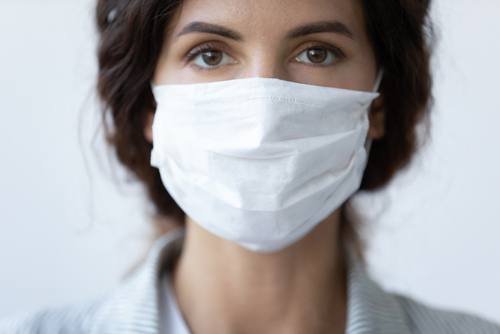
Remarkably, guidance and messaging, whether from the World Health Organisation or from Government agencies, seems to have evolved on the hoof in the last few months. As recently as 23 July workplace guidance in the ‘COVID-Secure’ series was changed to reflect “growing evidence that wearing a face covering in an enclosed space helps to protect individuals and those around them from COVID-19”.
Even health and safety practitioners, adept at deploying tight-fitting masks to protect workers from hazardous materials such as asbestos and silica dust, can get into a tailspin when discussing the pros and cons of face coverings.
A confounding factor is that, although a face covering might seem remotely akin to tight-fitting face masks, the former only aims to stop viral spread, rather than providing any inhalation protection. Across the UK at large, this turned out to be something of a revelation.
In addition, notable downsides to wearing a face covering include:
• as anyone who has walked around a supermarket now knows, they can be annoying or uncomfortable to wear, and they prompt unwanted hand to face contact
• the standard, durability and use of face coverings can vary greatly, greatly affecting any protection they might provide.
Donning and doffing the coverings, and sanitisation and waste disposal must also be carried out properly, along with thorough hand cleaning.
With the various pros and cons, and a shifting research background about the role and efficacy of face coverings, even enforcers have taken months to adjust to what it all means.
Even so, the Government encourages people to wear face coverings in enclosed public spaces “where there are people they do not normally meet” and it has gone on to mandate their use by the general public in certain enclosed spaces (such as retail premises). However, it does not mandate their use by employees in these premises. Despite what some see as inconsistency (and which has led to some business confusion) face coverings are not mandated for employees in typical office, construction, repair, maintenance or improvement settings, even for work indoors.
Partly by way of explanation, the Government says, “there is no universal face covering guidance for workplaces because of the variety of work environments in different industries”. Business decisions about face coverings at work should be based on activity- specific risk assessment, and on the relevant ‘COVID-19 Secure’ guidance. However, the Government adds it “would not expect to see employers relying on face coverings as risk management for the purpose of their health and safety assessments.”
Because social distancing remains a priority mitigating measure, special consideration in particular should be given to work - or travel - that may involve close proximity. This summer, ECA/BESA issued well-received sector guidance (GN2) on closer proximity working, which refers to face coverings. It says that “If face coverings are selected…there should be collective use where possible (maximising those in a ‘close proximity’ group who wear a face covering)”.
Going further than the Government guidance, ECA/BESA add that workplace face coverings should be distributed by the employer, along with instructions for use, maintenance, replacement, and disposal. ‘Homemade’ or ‘site improvised’ face coverings or visors are not advisable.
But in line with the COVID-19 Secure guidelines, the ECA/BESA guidance concludes by noting that “employers or employees should not rely solely on face coverings. Other measures must first be deployed, to mitigate the risk from COVID-19 as far as reasonably practicable”.
Particularly relevant ‘COVID-19 Secure’ guides are as follows:
• www.gov.uk/guidance/working-safely-during-coronavirus-covid-19/construction-and-other-outdoor-work
• www.gov.uk/guidance/working-safely-during-coronavirus-covid-19/vehicles
• www.gov.uk/guidance/working-safely-during-coronavirus-covid-19/homes
• GN2 can be viewed here
